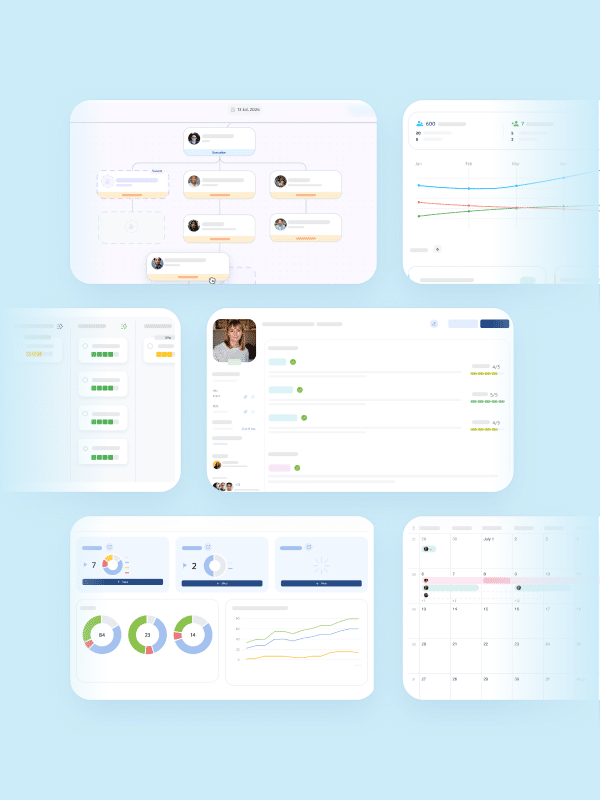A company’s success is more dependent than ever on its ability to attract and retain talents from a diversity of backgrounds, with versatile experiences and skills.
This is where Human Resource Management (HRM) plays a central role in shaping an inclusive and diverse workplace culture. When equality, fairness, and equal opportunities are integrated into the organizational culture, HR can not only enhance the company’s performance but also contribute to a more harmonious and innovative work environment.
The focus of this article is on how HRM contributes to creating a more diverse and inclusive workplace by promoting equality, fairness, and equal opportunities. We will delve into how this can be achieved in your organization. But first, what is HRM, and why is it important?
1. What is HRM and why is it important?
Human Resources Management (HRM), also known as strategic HR, encompasses a wide range of activities, including organizational culture and work environment, recruitment processes, staff development, reward systems, job performance, employee relations, and compliance with labor laws.
HRM plays a crucial role in creating an efficient organization by ensuring that employees’ knowledge, experiences, and competencies are utilized effectively and in alignment with the organization’s goals and strategies.
Let’s delve into some concrete ways in which HRM contributes to creating a more inclusive and diverse workplace. These measures include everything from recruitment strategies to leadership development, fair policies, to feedback and evaluation – all aimed at harnessing the potential of employees and fostering a culture of openness and respect.

2. Strategic Recruitment and Selection
One of the initial steps to create a more diverse workplace is to review the company’s recruitment and selection processes. The HR team can develop and implement strategies that actively target candidates from underrepresented groups to ensure a diversity of perspectives and experiences. This can involve everything from crafting neutral job advertisements to expanding recruitment channels and implementing structured interviews to avoid bias in the recruitment process.
By cultivating a diversity of talents, HR ensures that the company is not only fair from a diversity standpoint but also well-positioned for innovation and creative problem-solving.
3. Leadership Development and Equal Opportunities
To foster a culture of diversity and inclusion, it’s essential to recruit and develop leaders who understand and value these principles. HR can organize training sessions and workshops focused on raising awareness about diversity and various inclusive leadership practices. When leaders are equipped with tools and knowledge to manage and encourage diversity within their teams, HR can support the effort to create an environment where all employees feel valued and included.
This pursuit of inclusion and valuing diversity directly links to the principle of equal opportunities, which means that all employees have access to the same resources and chances for development, regardless of background or personal circumstances. HR plays a central role in ensuring that this principle permeates all parts of the organization, from recruitment to career development, and that they are monitored and followed up on.

4. Fairness Policies
A cornerstone in creating a more diverse and inclusive workplace is the design and implementation of fairness policies, ensuring fair working conditions and an inclusive organizational culture. From fair wage-setting and benefits to gender equality plans and anti-discrimination policies, a workplace where respect and diversity are valued is secured. HR plays a crucial role in ensuring that these policies are not just words on paper but actively upheld and monitored. One tip is to establish a clear framework where consequences for discriminatory behavior are clearly defined. This way, HR can ensure that the workplace is a space where equal opportunities are truly for everyone.
It’s also important to communicate that all forms of discrimination and unfair treatment of a person based on gender, gender identity, national or ethnic origin, religion or belief, disability, sexual orientation, or age are defined by law.
5. Feedback and Follow-Up
To effectively maintain diversity and inclusion in the workplace, it’s advantageous to utilize an HR system where feedback and continuous follow-up can be captured. Employee surveys, focus groups, and opportunities for anonymous feedback are effective ways to systematically collect and analyze feedback. Therefore, make the most of and listen to employees’ experiences and opinions to identify areas for improvement and take action to make the workplace more inclusive.
Moreover, regular follow-up on various diversity and inclusion initiatives can ensure that strategies are effective, successful efforts can be identified, and the need for adjustments can be quickly detected and addressed.
6. Concluding remarks
It’s important to remember that the work of creating a more diverse and inclusive workplace is a continuous and long-term commitment and process. An attractive workplace is the result of deliberate choices and efforts to maintain an organizational culture where everyone feels valued and included.
Here, the HR team can be proactive and innovative in their approach, ensuring that strategies and initiatives are adapted to meet the needs of employees and changes in society at large.
Lifelong learning and a culture characterized by a willingness to improve create the best conditions for a workplace that is equitable, fair, dynamic, creative, and successful.

Want to discover more?
Book a demo of Heartpace here!
Discover more articles
Want to keep updated?
Subscribe to our blog posts, news and webinars here. We promise that we won’t overwhelm you with emails, nor will we never ever give your email address to anyone else!








